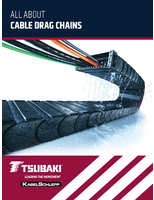Holst Centre Reports Breakthrough in Organic RFID
Share:
The plastic RFID tag builds on IMEC's plastic rectifier technology combined with Polymer Vision's organic electronics technology and approaches item-level tagging requirements
INTERNATIONAL SOLID STATE CIRCUIT CONFERENCE 2008 - SAN FRANCISCO - CALIFORNIA
SAN FRANCISCO, CALIFORNIA - February 5, 2008 - At today's International Solid State Circuit Conference, Holst Centre - founded by the Belgian nanoelectronics research center IMEC and the Dutch research center TNO - presents a plastic 64-bit inductively-coupled passive RFID tag operating at 13.56MHz. With a record 780bit/s data readout of 64 bits over 10cm, the device approaches item-level tagging requirements. The tag generates a 5-fold higher bit rate compared to state-of-the-art plastic RFID systems.
The achievement paves the way for low-cost high-volume RFID tags to replace barcodes.
The RFID system consists of a low-cost inductive antenna, capacitor, plastic rectifier and plastic circuit, all on foil. The LC antenna resonates at 13.56 MHz and powers up the organic rectifier with an AC voltage at this frequency. From this voltage, the rectifier generates the DC supply voltage for the 64-bit organic transponder chip which drives the modulation transistor between the on and off state with a 64bit code sequence. The foil with the transponder chip was processed with the state-of-the-art organic electronics technology provided by Holst Centre partner Polymer Vision, the pioneer of the rollable display enabled mobile devices.
Current results build on IMEC's breakthrough rectifier technology. Organic vertical diodes have been used in the rectifier since they outperform organic transistors for rectification at frequencies at and above 13.56MHz.
At an RF magnetic field strength of 1.26A/m the rectifier generates an internal transponder supply voltage of 14 V. At this voltage, the 64-bit designed code is read out at a data rate of 787bits/s. The reading distance is up to 10cm. The organic 64bit transponder chip, fabricated by Polymer Vision, is using organic bottom-gate p-type Pentacene thin-film transistors from soluble precursor route. It comprises only some 400 transistors and is thereby significantly smaller than previous designs.
The work was done within the framework of the Holst Centre research program on organic circuitry and was co-funded by the European project POLYAPPLY.
About Holst Centre
Holst Centre is rapidly evolving into an internationally recognized center for open innovation in technologies for wireless autonomous sensor-based microsystems and systems-in-foil. Holst Centre was established in 2005 by the Flemish research centre for nanoelectronics and nanotechnology IMEC and the Dutch research institute TNO. From the start, it is financially supported by the Dutch Ministry of Economic Affairs and can count on the approval of the Flemish Government. Located on the High Tech Campus in Eindhoven, Holst Centre can benefit from the state-of-the art on-site facilities. Holst Centre has over 100 employees (growing to over 200 by
2010) and a network of over 15 industrial partners.
More information: www.holstcentre.com
About IMEC
IMEC is a world-leading independent research center in nanoelectronics and nanotechnology. Its research focuses on the next generations of chips and systems, and on the enabling technologies for ambient intelligence. IMEC's research bridges the gap between fundamental research at universities and technology development in industry. Its unique balance of processing and system know-how, intellectual property portfolio, state-of-the-art infrastructure and its strong network of companies, universities and research institutes worldwide position IMEC as a key partner for shaping technologies for future systems.
IMEC vzw is headquartered in Leuven, Belgium, has a sister company in the Netherlands, IMEC-NL, concentrating on wireless autonomous transducer solutions, and has representatives in the US, China, Japan and Taiwan. Its staff of more than 1600 people includes more than 500 industrial residents and guest researchers. In 2007, its revenue (P&L) is estimated at about EUR 235 million. Further information on IMEC can be found at www.imec.be.
About Polymer Vision
Polymer Vision is the pioneer and mobile industry leader of a revolutionary new generation of mobile devices enabled by rollable displays. The company's first product, the Readius®, is a pocket sized device combining a large 5" rollable display ith 3G high speed connectivity. It is designed around 'always available' and 'real time updated' personalised news and information of the user. The Readius® is the first member of a family of Polymer Vision products that will offer consumers large rollable displays(5"-to-9") in small pocket size devices. These devices fulfill a growing demand for larger mobile displays to compliment the accelerating trend towards mobile content, applications and mobile advertising. In 2007 Polymer Vision was the winner of the 3GSM Global Innovation Award. In October of 2007 Polymer Vision acquired the whole of the business activities of Innos Limited UK, the manufacturing subcontractor of the company's rollable displays and integrated this into Polymer Vision Ltd.
More information: www.polymervision.com
Contacts:
Holst Centre: Koen Snoeckx,
Communication Manager,
T: +31 4 277 40 91,
Koen.Snoeckx@holstcentre.com
IMEC: Katrien Marent,
Director of External Communications,
T: +32 16 28 18 80,
katrien.marent@imec.be
Barbara Kalkis,
Maestro Marketing & PR,
T : +1 408 996 9975,
kkalkis@compuserve.com




